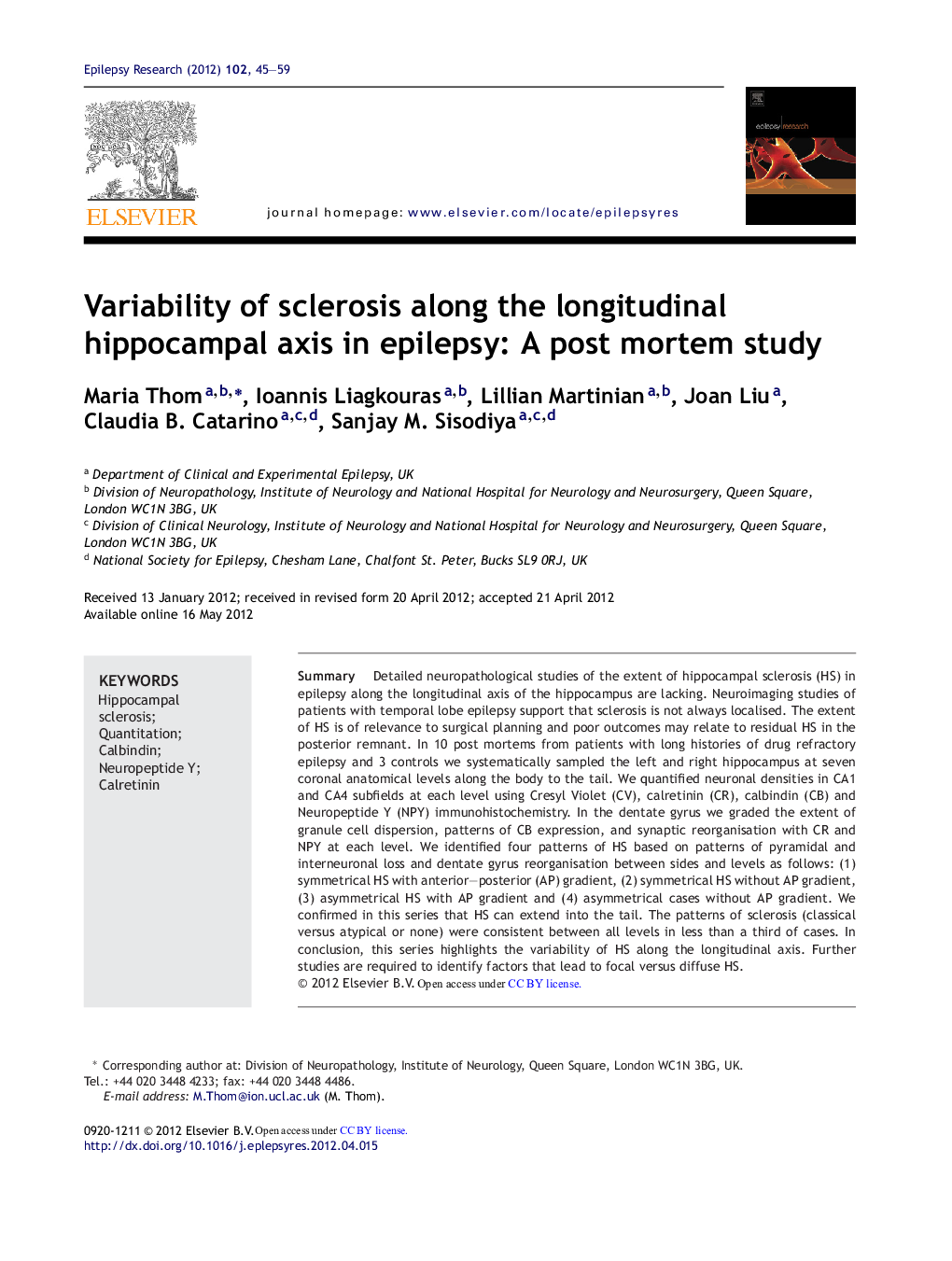| Article ID | Journal | Published Year | Pages | File Type |
|---|---|---|---|---|
| 6016047 | Epilepsy Research | 2012 | 15 Pages |
SummaryDetailed neuropathological studies of the extent of hippocampal sclerosis (HS) in epilepsy along the longitudinal axis of the hippocampus are lacking. Neuroimaging studies of patients with temporal lobe epilepsy support that sclerosis is not always localised. The extent of HS is of relevance to surgical planning and poor outcomes may relate to residual HS in the posterior remnant. In 10 post mortems from patients with long histories of drug refractory epilepsy and 3 controls we systematically sampled the left and right hippocampus at seven coronal anatomical levels along the body to the tail. We quantified neuronal densities in CA1 and CA4 subfields at each level using Cresyl Violet (CV), calretinin (CR), calbindin (CB) and Neuropeptide Y (NPY) immunohistochemistry. In the dentate gyrus we graded the extent of granule cell dispersion, patterns of CB expression, and synaptic reorganisation with CR and NPY at each level. We identified four patterns of HS based on patterns of pyramidal and interneuronal loss and dentate gyrus reorganisation between sides and levels as follows: (1) symmetrical HS with anterior-posterior (AP) gradient, (2) symmetrical HS without AP gradient, (3) asymmetrical HS with AP gradient and (4) asymmetrical cases without AP gradient. We confirmed in this series that HS can extend into the tail. The patterns of sclerosis (classical versus atypical or none) were consistent between all levels in less than a third of cases. In conclusion, this series highlights the variability of HS along the longitudinal axis. Further studies are required to identify factors that lead to focal versus diffuse HS.
